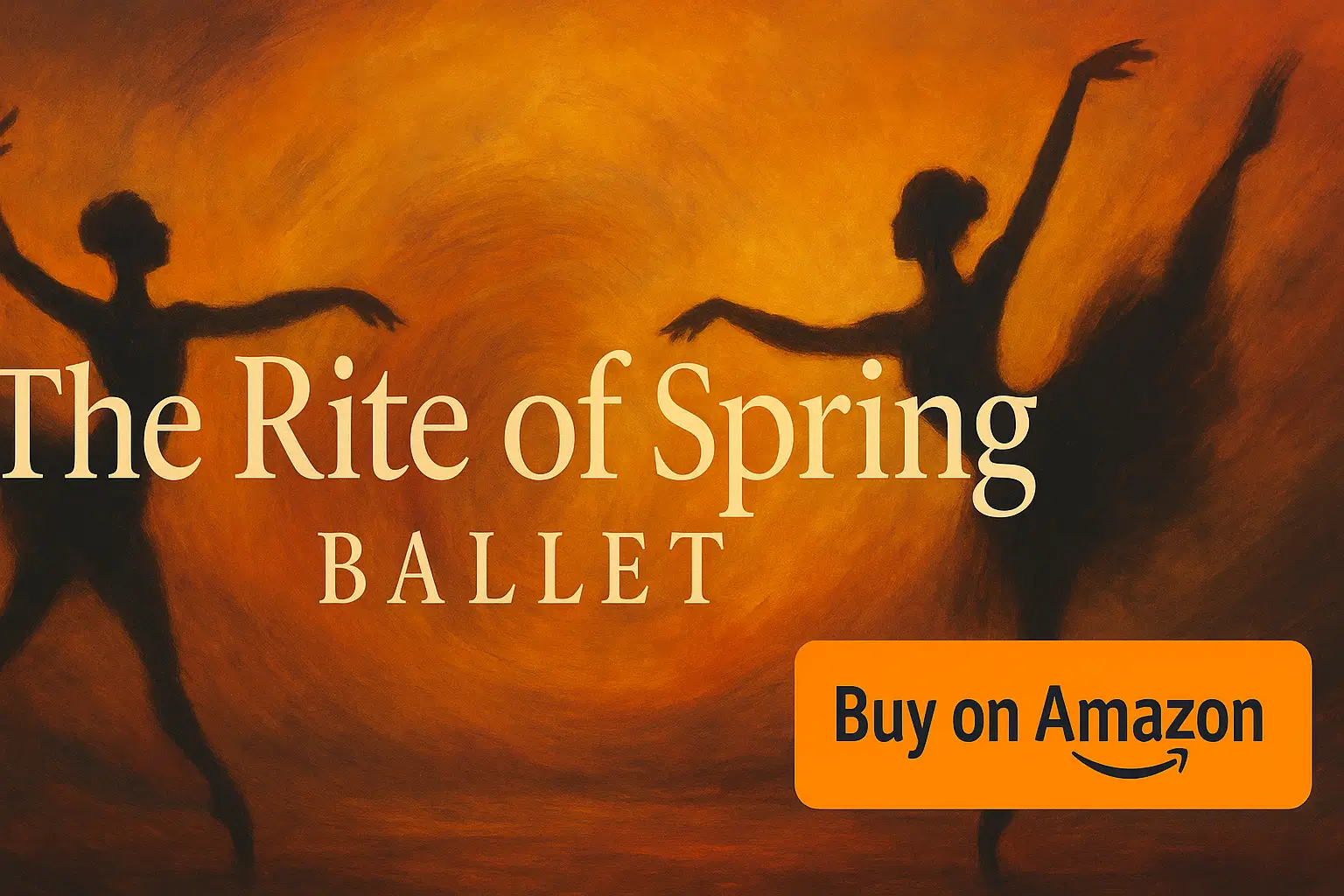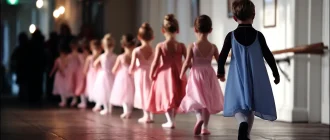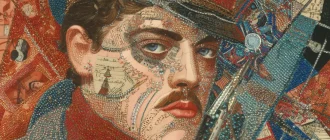Overview of The Rite of Spring ballet: Igor Stravinsky’s 1913 composition broke new ground in music and dance, securing its place in the classical repertoire. The ballet’s historical significance is underscored by its infamous premiere, rumored to have incited a riot among the audience.
The ballet’s portrayal of ancient pagan rituals in Russia shocked its first audience with innovative music and unconventional choreography. This article examines its creation, early reception, and enduring impact on the arts.
Graceful Insights
- Igor Stravinsky’s The Rite of Spring was inspired by pagan rituals. It incorporated innovative music and raw choreography, marking a revolutionary shift in the ballet genre.
- The premiere on May 29, 1913, elicited a shocking and chaotic reaction from the audience, highlighting the ballet’s radical departure from classical norms.
- Over time, The Rite of Spring has gained critical acclaim and influence, securing its legacy through various re-interpretations and becoming a significant work in 20th-century music and dance.
The Rite of Spring Podcast
| Aspect | Details |
|---|---|
| Title | The Rite of Spring (Le Sacre du printemps) |
| Composer | Igor Stravinsky |
| Choreographer | Vaslav Nijinsky |
| Premiere Date | May 29, 1913 |
| Premiere Location | Théâtre des Champs-Élysées, Paris, France |
| Genre | Ballet and orchestral concert work |
| Original Ballet Company | Ballets Russes, directed by Sergei Diaghilev |
| Theme | A depiction of pagan rituals in ancient Russia, culminating in a sacrificial dance where a chosen maiden dances herself to death to ensure the arrival of spring. |
| Notable Features | – Revolutionary music with complex rhythms and dissonance – Groundbreaking choreography featuring angular, heavy movements and unconventional poses |
| Initial Reception | The premiere incited a near-riot due to its avant-garde music and choreography, which left the audience shocked |
| Cultural Impact | – Redefined modern ballet and classical music – Influenced numerous composers and choreographers, paving the way for modernist movements in the arts |
| Structure | Two parts: Adoration of the Earth and The Sacrifice, each containing several sections that depict various rituals and dances. |
| Legacy | Recognized as one of the most influential works of the 20th century, it is continually performed and reinterpreted by various artists and companies. |
| Famous Revivals | – Pina Bausch (1975): Known for its intense physicality and emotional depth. – Kenneth MacMillan (1962): Noted for its innovative choreography. |
The Genesis of The Rite of Spring
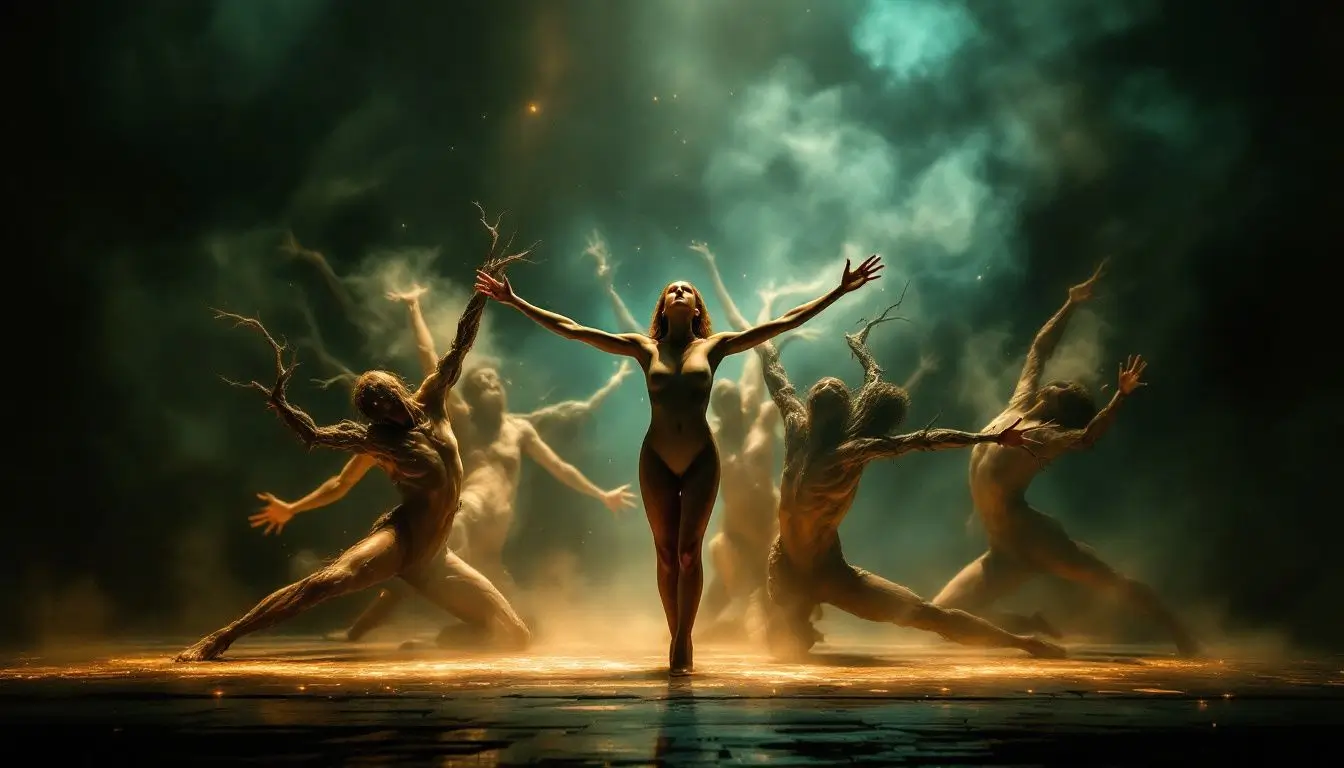
The roots of “The Rite of Spring” can be traced back to the rich cultural tapestry of pagan Russia, which serves as the backdrop for this groundbreaking ballet. Igor Stravinsky envisioned a work that would capture the primitive essence of ancient rituals celebrating the arrival of spring. This vision culminated in a ballet that depicts a solemn pagan rite, where elder sages observe a young girl as she dances herself to death in a ritual sacrifice.
The influence of Russian ballet, particularly the avant-garde movements led by the Ballets Russes, significantly shaped the creation of “The Rite of Spring.”
Stravinsky’s music for “The Rite of Spring” is deeply infused with Russian folk melodies, which lend the piece an authentic cultural essence. The subtitle “Pictures of Pagan Russia in Two Parts” reflects the work’s thematic focus on primitive rituals and the cyclical nature of life and death. Stravinsky sought to evoke the raw, untamed energy of these ancient ceremonies, and his composition does just that.
The genesis of “The Rite of Spring” was not merely about creating a new ballet; it was about bringing a single idea to life—an idea that was both revolutionary and deeply rooted in cultural history. Stravinsky wrote music that defied the conventions of his time, incorporating dissonance, complex rhythms, and an overall sense of primal urgency. The result was a musical choreographic work unlike anything the world had ever seen.
Stravinsky completed the score in March 1913, just a few months before the ballet’s premiere. His collaboration with Nicholas Roerich, a specialist in folk art and ancient rituals, was crucial in shaping the final work. Roerich’s designs drew inspiration from various sources, including the Primary Chronicle and studies of peasant folklore, which helped ground the ballet in its cultural context. Together, they created a vivid portrayal of a world where nature and ritual intertwine.
Next, we will explore how Stravinsky’s collaboration with the Ballets Russes and its visionary leader, Sergei Diaghilev, helped bring “The Rite of Spring” to life.
Composition and Inspiration
The creation of “The Rite of Spring” was a journey into the heart of Russian folklore and ancient traditions. Igor Stravinsky, captivated by the raw energy and mysticism of pagan Russia, sought to bring these elements to life through his music. His fascination with Russian folk music and mythology was the bedrock for this groundbreaking work.
Stravinsky’s score for “The Rite of Spring” was revolutionary. Composed in 1913 for the Ballets Russes, it featured complex rhythms, dissonant harmonies, and an expansive orchestration that included many percussion instruments.
The work is divided into “The Adoration of the Earth” and “The Sacrifice.” Each part vividly depicts scenes from ancient pagan rituals, culminating in the harrowing dance of a young girl chosen as a sacrificial victim.
The premiere of “The Rite of Spring” at the Théâtre des Champs-Élysées on May 29, 1913, was a cultural milestone that sparked intense debate and controversy. The audience was unprepared for the avant-garde nature of Stravinsky’s music and Vaslav Nijinsky’s raw, primal choreography. Despite the initial uproar, the ballet has since been recognized as a masterpiece of modern classical music, celebrated for its innovative approach and profound impact on the arts.
Stravinsky drew inspiration from diverse sources, including Russian folk tales, mythology, and the solemn pagan rites that marked the arrival of spring. His use of polyrhythms, atonality, and dissonance was groundbreaking, pushing the boundaries of classical music.
The score’s instrumentation was equally innovative. It featured unusual timbres, such as the opening bassoon solo and the use of the bass clarinet, which added to the work’s distinctive sound.
The Joffrey Ballet’s 1980s reconstruction of Nijinsky’s original choreography was crucial in reviving interest in “The Rite of Spring.” This reconstruction allowed modern audiences to experience the ballet as it was originally conceived, highlighting its enduring power and beauty. The influence of “The Rite of Spring” extends beyond classical music, resonating in genres as diverse as jazz and rock.
In conclusion, “The Rite of Spring” is a testament to Stravinsky’s genius and ability to blend cultural heritage with innovative musical techniques. Its deep roots in Russian culture and its avant-garde style make it a work of enduring significance and inspiration.
Collaboration with Ballets Russes

The creation of “The Rite of Spring” was a collaborative effort involving some of the most innovative minds in ballet. At the heart of this collaboration was the partnership between Igor Stravinsky and Sergei Diaghilev, the impresario behind the Ballets Russes.
Diaghilev’s vision for the Ballets Russes was to integrate various artistic disciplines—music, dance, and visual art—into a cohesive whole, and “The Rite of Spring” perfectly embodied this vision.
Diaghilev was impressed by Stravinsky’s earlier works, “L’Oiseau de Feu” (The Firebird) and “Petrushka,” and decided to commission him to compose the music for “The Rite of Spring.” The two artists had a symbiotic relationship, with each one’s talents complementing the other’s.
Stravinsky’s music provided the perfect canvas for Diaghilev’s ambitious productions, and Diaghilev’s theatrical expertise helped bring Stravinsky’s bold ideas to life.
A key figure in the development of “The Rite of Spring” was Nicholas Roerich, whose expertise in folk art and ancient rituals was instrumental in shaping the ballet’s design and thematic elements. Roerich drew inspiration from various historical and cultural sources, including the Primary Chronicle and studies of peasant folklore, to create sets and costumes that were both authentic and evocative of the period.
His collaboration with Stravinsky ensured that the ballet’s visual elements were as groundbreaking as its music and choreography.
The Ballets Russes was known for pushing the boundaries of ballet, and “The Rite of Spring” was no exception. The company’s repertoire included many works that challenged traditional notions of dance and music, and “The Rite of Spring” fit perfectly into this mold. The ballet received much attention even before its premiere, with anticipation building among ballet companies and the Parisian elite.
Next, we will examine the premiere of “The Rite of Spring” and the initial reactions it provoked from the audience.
Premiere and Initial Reactions
The premiere of “The Rite of Spring” on May 29, 1913, at the Théâtre des Champs-Élysées was one of the most anticipated cultural events of the time. The combination of Stravinsky’s innovative music and Nijinsky’s radical choreography promised a performance unlike any other. However, the audience’s reaction was far from what the creators had hoped for.
From the very first bars of the score, the audience was taken aback by Stravinsky’s aggressive and unconventional music. Stravinsky’s use of harsh dissonances and jarring rhythms was a stark departure from the melodic and harmonic norms of the time.
The opening bassoon solo played in an unusually high register set the tone for the rest of the performance. It challenged the audience’s expectations of what classical music should sound like.
Nijinsky’s choreography, characterized by heavy stamping and unusual postures, added to the shock and confusion. The dancers’ movements were deliberately primitive and raw, reflecting the ballet’s theme of pagan rituals. This radical departure from classical ballet techniques caused much unrest among the audience. Stravinsky noted that Nijinsky’s choreography was so controversial that it overshadowed his music.
The audience’s reaction was immediate and intense. Laughter, insults, and mild protests erupted from various theater parts. As the performance progressed, the noise from the audience grew so loud that Nijinsky had to beat out the steps from the wings to ensure the dancers could hear the music. The narrative of a riot breaking out during the premiere has been exaggerated over time, but there is no doubt that the first performance caused a significant uproar.
Despite the chaotic reception on opening night, the second night of the performance was somewhat calmer, although the cultural divide remained evident. Over the years, the premiere of “The Rite of Spring” has become a legendary event. It is often cited as one of the first examples of modernist art that challenges traditional norms and provokes strong reactions from its audience.
In the following section, we will delve into Nijinsky’s choreography, examining its innovative aspects and the initial skepticism it faced from Stravinsky.
Nijinsky’s Choreography

Vaslav Nijinsky’s choreography for “The Rite of Spring” was revolutionary. At a time when classical ballet was characterized by grace and elegance, Nijinsky introduced a style that was raw, primal, and aggressive. His choreography broke away from the conventional movements of classical ballet, reflecting the primitive themes of the ballet through heavy stamping and unusual postures.
The dancers’ movements were designed to evoke the ancient rituals depicted in ballet. The choreography included ground-based movements, with dancers often bent at the waist and making angular, jerky motions. This starkly contrasts with the fluid and airy movements typically associated with ballet. Nijinsky’s dance style was designed to represent the music’s rhythmic complexity and dissonance visually.
Initially, Stravinsky was skeptical of Nijinsky’s abilities as a choreographer. Although he recognized Nijinsky’s talent as a dancer, he doubted whether to translate the score’s complex rhythms and thematic elements into effective choreography. However, Nijinsky’s innovative approach eventually won over music critics and Stravinsky, resulting in a choreography that perfectly complemented the music’s revolutionary spirit.
The audience’s initial skepticism and subsequent acceptance of Nijinsky’s choreography mirrored their reaction to the ballet. Just as Stravinsky had to adjust his expectations, so did the audience, who were unprepared for the radical departure from classical ballet norms. We will now explore the musical innovations in Stravinsky’s score that complemented Nijinsky’s groundbreaking choreography.
Musical Innovations in Igor Stravinsky’s Score
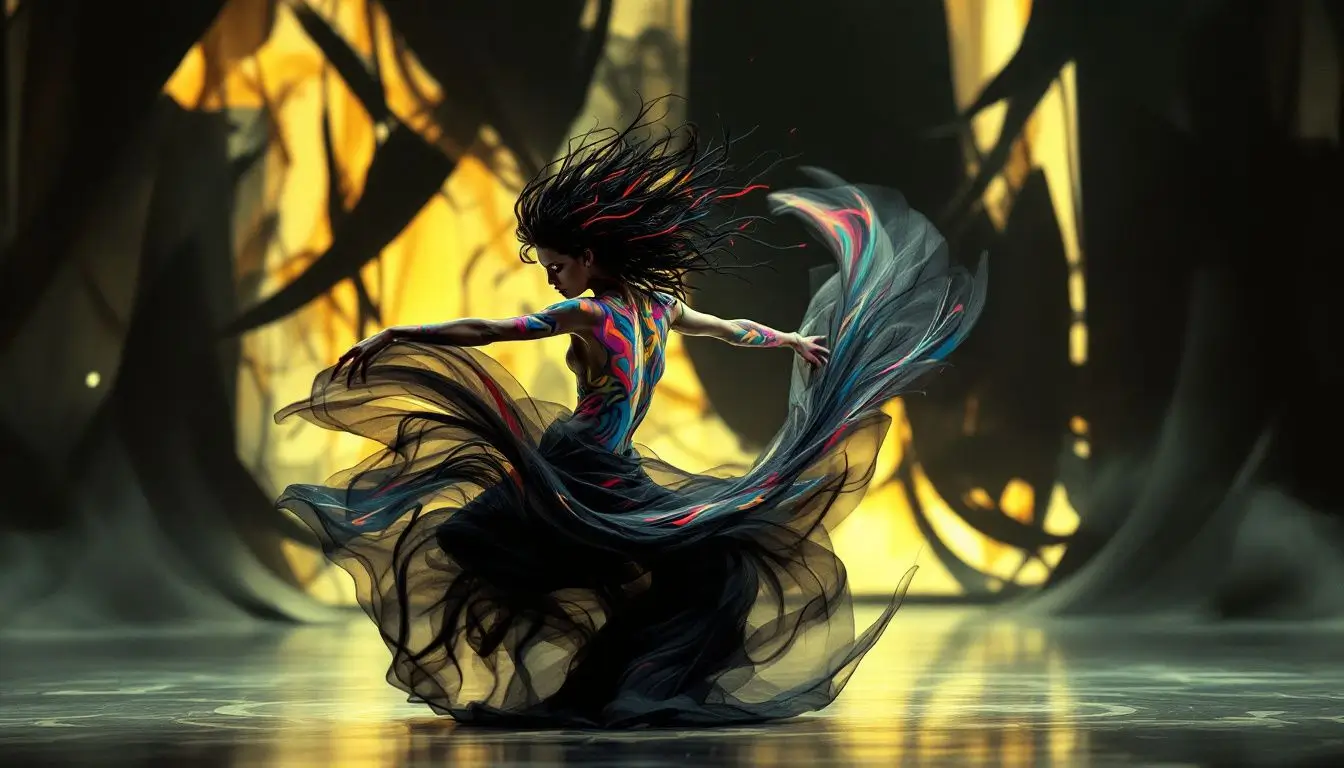
Igor Stravinsky’s score for “The Rite of Spring” is considered one of the most innovative compositions in the history of classical music. Stravinsky wrote music characterized by primal rhythms, harmonic dissonance, and a sense of raw energy. This revolutionary approach helped define the spirit of the Ballets Russes and set a new direction for 20th-century music.
One of the most striking aspects of Stravinsky’s music is its rhythmic complexity. The music features sudden, jarring rhythms that beat rhythmically and often change time signatures, creating a sense of unpredictability and tension. These complex rhythmic structures were a significant departure from the more regular and predictable rhythms of classical music, and they played a crucial role in conveying the ballet’s primitive themes.
In addition to its rhythmic innovations, the score features harsh dissonances that create an atmosphere of restlessness and energy. Stravinsky employed unique harmonic structures that clashed and collided, adding to the sense of chaos and intensity. This use of dissonance was unprecedented at the time and contributed to the score’s revolutionary nature.
Stravinsky’s instrumentation was equally innovative. He employed a massive orchestra, including instruments like the bass clarinet, piccolo trumpet, and alto flute, to create a wide range of distinctive sounds. These unconventional instruments added unique textures and colors to the music, enhancing its primal and barbaric qualities. The opening bassoon solo, played in an unusually high register, is a prime example of Stravinsky’s experimental approach to instrumentation.
The orchestra’s overwhelming sound contributed to the score’s revolutionary impact. Stravinsky’s music challenged the norms of classical composition and opened the door for future musical experimentation.
We will now explore the ballet’s narrative and structure, gaining a deeper understanding of its thematic elements and storyline.
Narrative and Structure of the Ballet
“The Rite of Spring” unfolds in two distinct parts, each depicting various pagan rituals celebrating the advent of spring. These rituals eventually culminate in a young girl’s ritual sacrifice, a theme that is both haunting and evocative. The ballet’s structure reflects a journey from nature’s awakening to the ultimate sacrifice, encapsulating the cyclical nature of life and death.
Part I, titled “L’Adoration de la Terre” (Adoration of the Earth), begins with an orchestral introduction that represents the arrival of spring. The music is rich with the sounds of nature, as Stravinsky’s score captures the essence of the earth coming to life.
This segment includes scenes such as “Augurs of Spring,” in which an old woman foretells the future, and “Ritual of Abduction,” in which young girls are taken in a ceremonial dance. These scenes depict the community’s preparation for the rituals, reminiscent of Le Sacre du printemps.
The ballet turns darker in part II, “Le Sacrifice” (The Sacrifice). A young girl is chosen as the sacrificial victim and performs a young girl’s dance, leading to her death. This part of the ballet is intense and emotionally charged, reflecting the gravity of the ritual and the community’s belief in the necessity of sacrifice for spring renewal. The choreography and music work in tandem to create a powerful narrative arc that culminates in the ultimate act of ritual sacrifice.
The structure of the ballet was finalized during a visit to Talashkino, where Stravinsky and Roerich worked closely together. Their collaboration ensured that every element of the ballet, from the music to the choreography to the visual design, was aligned with the overarching theme of pagan rituals and the celebration of spring.
Next, we will examine the performance history and legacy of “The Rite of Spring,” tracing its evolution over the years and its enduring impact on ballet and music.
Performance History and Legacy
The performance history of “The Rite of Spring” is as storied and complex as the ballet. Nijinsky’s original choreography was performed only eight times before it was replaced by Léonide Massine’s version in the 1920s. Despite the initial mixed reactions and confusion, Stravinsky and Nijinsky remained steadfast in their artistic intent, emphasizing the groundbreaking nature of their work.
In 1987, the Joffrey Ballet made a significant contribution to the legacy of “The Rite of Spring” by successfully reconstructing Nijinsky’s original choreography, which had been thought lost. This reconstruction, performed in Los Angeles, was met with critical acclaim, offering modern audiences a glimpse into the ballet’s original vision.
The Joffrey Ballet continued to celebrate the ballet’s impact with centennial performances in 2013, highlighting its enduring significance in the dance world.
Since its premiere, “The Rite of Spring” has been the subject of approximately 150 productions, many of which are regarded as classics. These numerous interpretations have ensured that the ballet remains a vital part of the global dance repertoire. Additionally, Stravinsky’s score has become a staple in concert hall repertoires, often performed as a standalone orchestral piece, further cementing its place in music history.
The work is considered one of the most significant and influential musical compositions of the 20th century, having a profound impact on various art forms. Stravinsky’s innovative techniques inspired leading composers and opened new pathways for musical expression. Several decades after the premiere, Stravinsky continued to revise the score, demonstrating his commitment to the work’s evolution.
We will now review some of the most influential recordings of “The Rite of Spring,” highlighting how these recordings have contributed to the ballet’s enduring legacy.
Influential Recordings
Numerous renowned orchestras and conductors have recorded “The Rite of Spring,” each bringing their unique interpretation to Stravinsky’s complex score. Among the most iconic recordings is Leonard Bernstein’s 1958 version with the New York Philharmonic, known for its passionate intensity and dynamic energy.
Valery Gergiev’s 1999 recording with the Kirov Orchestra emphasizes the work’s primal and brutal nature. Gergiev’s interpretation captures the raw energy and dissonance that define Igor Stravinsky’s music, offering listeners a visceral experience.
Other notable recordings include Andrew Litton’s 2009 version with the Bergen Philharmonic, praised for its balance and narrative flow, and Daniele Gatti’s 2011 recording with the Orchestre National de France, highlighting the score’s subtler musical details.
These recordings provide unique insights into the work’s complexity and showcase how “The Rite of Spring” can be interpreted. Each conductor brings a fresh perspective to the music, ensuring that Stravinsky’s revolutionary score continues to captivate and inspire audiences worldwide.
Next, we will explore how “The Rite of Spring” has influenced 20th-century culture, leaving an indelible mark on music, dance, and broader artistic movements.
Influence on 20th-Century Culture

“The Rite of Spring” profoundly influenced 20th-century culture, particularly music and dance. Stravinsky’s work introduced innovative techniques, such as the unusual use of traditional instruments, complex rhythms, and harmonic dissonance, contributing to a new musical language that resonated with future composers.
This new language found greater acceptance in concert settings, where the focus on musical innovation was more appreciated.
One of the most notable productions inspired by “The Rite of Spring” was Pina Bausch’s 1975 version, which offered a stark and provocative depiction of the sacrificial theme. Bausch’s interpretation challenged traditional views and pushed the boundaries of contemporary dance. The ballet’s first concert performance in 1914 highlighted its popularity beyond the ballet stage, establishing it as a significant work for orchestra.
“The Rite of Spring” has left an indelible mark on the artistic landscape, influencing music, dance, and broader artistic movements. Its revolutionary approach to composition and performance resonated with artists across various disciplines, inspiring them to explore new forms of expression and challenge established norms.
We will now summarize the key points and reflect on the ballet’s enduring significance as we conclude our journey through the history and impact of “The Rite of Spring.”
Resume
“The Rite of Spring” stands as a testament to the transformative power of art. From its genesis in the cultural context of pagan Russia to its revolutionary premiere and subsequent legacy, the ballet has continually challenged and inspired audiences and artists alike. Stravinsky’s innovative score and Nijinsky’s groundbreaking choreography marked a turning point in the history of ballet and classical music.
The collaboration with Ballets Russes, the tumultuous premiere, and the eventual acceptance and celebration of the ballet underscore its lasting impact. “The Rite of Spring” has become a staple in dance and concert repertoires, influencing countless artists and composers throughout the 20th century.
As we reflect on the journey of “The Rite of Spring,” its significance extends far beyond its initial reception. It remains a powerful reminder of the creative power of art to push boundaries, challenge norms, and leave an indelible mark on the cultural landscape.
FAQ
What was groundbreaking about Nijinsky’s choreography for The Rite of Spring?
Nijinsky shattered ballet convention by replacing elegant lines and airy jumps with heavy, grounded movement: dancers turned their feet inward, hunched their torsos, hammered out polyrhythmic steps in jagged formations, and moved as a primeval tribe rather than as individual virtuosos. This radical vocabulary, wed to Stravinsky’s dissonant score, made The Rite of Spring the first modernist ballet, redefining what dance could express and how it could look.
How many choreographic reinterpretations of The Rite of Spring exist, and which versions are considered landmarks?
More than two hundred adaptations have been catalogued since 1913. Key milestones include Léonide Massine’s 1920 revival, Maurice Béjart’s visceral 1959 staging, Kenneth MacMillan’s 1962 version for the Royal Ballet, Pina Bausch’s earthy 1975 Tanztheater masterpiece, Mats Ek’s 1984 psychological reading, the Joffrey Ballet’s 1987 reconstruction of Nijinsky’s original, and a wave of twenty-first-century re-imaginings from Seeta Patel’s Bharatanatyam ritual to hip-hop tributes such as In Bloom.
Why is Nicholas Roerich’s contribution crucial to understanding the ballet’s visual identity?
Roerich, an archaeologist-painter steeped in Slavic folklore, co-wrote the scenario and designed the sets and costumes. He translated field research on prehistoric dances, Scythian kurgans, and folk embroideries into an onstage landscape of earthen mounds and rough-spun tunics, turning the Théâtre des Champs-Élysées into a pagan steppe and giving the ballet its signature primitivist look.
Which folk melody inspired the famous opening bassoon solo?
Stravinsky lifted the line almost verbatim from the Lithuanian song “Tu manu seserėlė” (“You, My Little Sister”). By scoring it in the bassoon’s stratospheric register, he transformed a gentle harvest tune into an otherworldly call that announces the work’s archaic world.
What unusual orchestral forces give the score its raw power?
The ballet calls for a super-sized ensemble: quadruple woodwinds with alto flute, E-flat clarinet, and contrabassoon; five trumpets and eight horns; an expanded percussion battery with two timpanists, bass drum, tam-tam, guiro, and antique cymbals; two harps; and strings asked to snap pizzicato, strike col legno, and play divisi stacks. The sheer weight and color density were unprecedented in 1913.
Why is conducting The Rite of Spring considered a formidable test for maestros?
Rapid meter shifts—sometimes every bar—combine with displaced accents and conflicting polyrhythms that leave little room for traditional beat patterns. Coordinating the notorious “Danse sacrale,” where the meter flips almost every pulse, demands razor-sharp cues and split-second ensemble control, making the piece a benchmark at conducting competitions.
How did the ballet influence modern film music and popular culture?
Stravinsky’s jagged rhythms and stabbing orchestral blocks became a template for screen tension. Bernard Herrmann’s screeching strings in Psycho, John Williams’s jungle percussion in Jurassic Park, and countless sci-fi chase scenes echo its sound world. Disney’s 1940 Fantasia first paired the score with dinosaurs, cementing its pop-culture reach.
In what ways has the piece been adapted beyond classical ballet?
Pina Bausch’s dirt-strewn Tanztheater, Dorrance Dance’s tap reboot, hip-hop collectives such as Melting Spot at La Villette, and Germaine Acogny’s all-African ensemble each recast the ritual through their movement languages, proving the work’s flexibility across genres.
What physical challenges do dancers face, especially during the Sacrificial Dance?
Nijinsky’s turned-in feet, deep knee flexions, and stamp-heavy motifs defy classical alignment, tax joints, and stamina. Later choreographers keep the pounding intensity: dancers must sustain explosive jumps, floor rolls, and off-balance pivots in relentlessly shifting tempos, often on unconventional surfaces like Bausch’s loam.
How was the work received outside Paris after the notorious premiere?
The 1914 concert premiere in Saint Petersburg converted many skeptics, revealing structural clarity without the need for choreography. Massine’s 1920 staging in London and later U.S. appearances met curiosity rather than outrage, and by the mid-1920s, the score was touring Europe as a modern classic.
Who revived Nijinsky’s lost choreography, and why is the reconstruction controversial?
Dance sleuths Millicent Hodson and Kenneth Archer spent sixteen years piecing together notebooks, sketches, and eyewitness accounts to mount a full reconstruction for the Joffrey Ballet in 1987. Admirers hailed the archaeological feat; critics argued that fragments and conjecture can never replicate Nijinsky’s shock value.
Which performers are celebrated for embodying the Chosen One?
Maria Piltz created the role in 1913. Martha Graham’s volcanic interpretation (1930), Monica Mason’s searing sacrifice in MacMillan’s version, and recent stars such as Manuella Kouassi in the Bausch staging illustrate the role’s magnetism across eras and styles.
How do Roerich’s stage designs mirror Slavic pagan rituals?
Earth-tone palettes, embroidered geometrics, and leather adornments evoke a sense of village garb. At the same time, monumental backdrops of stone circles and burial mounds reference archaic cult sites, situating the action in a mythic pre-Christian landscape rather than a literal historical setting.
What impact did the ballet have on the broader primitivist movement in art?
Its exaltation of prehistoric ritual paralleled Picasso’s Iberian masks, Gauguin’s Polynesian idylls, and D. H. Lawrence’s elemental prose. Fusing modernist form with archaic content legitimized “primitive” sources as fertile ground for avant-garde experimentation.
How is The Rite of Spring used in contemporary music and dance education?
The score anchors university courses on 20th-century analysis, rhythm, and orchestration. Conservatory percussion studios drill their polyrhythms, and dance academies study contrasting choreographies to explore the embodiment of complex meters.
How have recent choreographers re-imagined the sacrificial narrative?
Seeta Patel’s Bharatanatyam version recasts the Chosen One as a divinity rather than a victim; Dada Masilo frames sacrifice within African communal rites; and contemporary productions often question themes of gender, power, and climate, proving the story’s elastic symbolism.
Where can audiences watch authoritative recordings today?
High-definition streams of the Joffrey reconstruction, Pina Bausch’s staging filmed in Senegal, and recent concert performances by leading orchestras are available on platforms such as Medici TV, YouTube channels of major companies, and Blu-ray releases from the Berlin Philharmonic.


